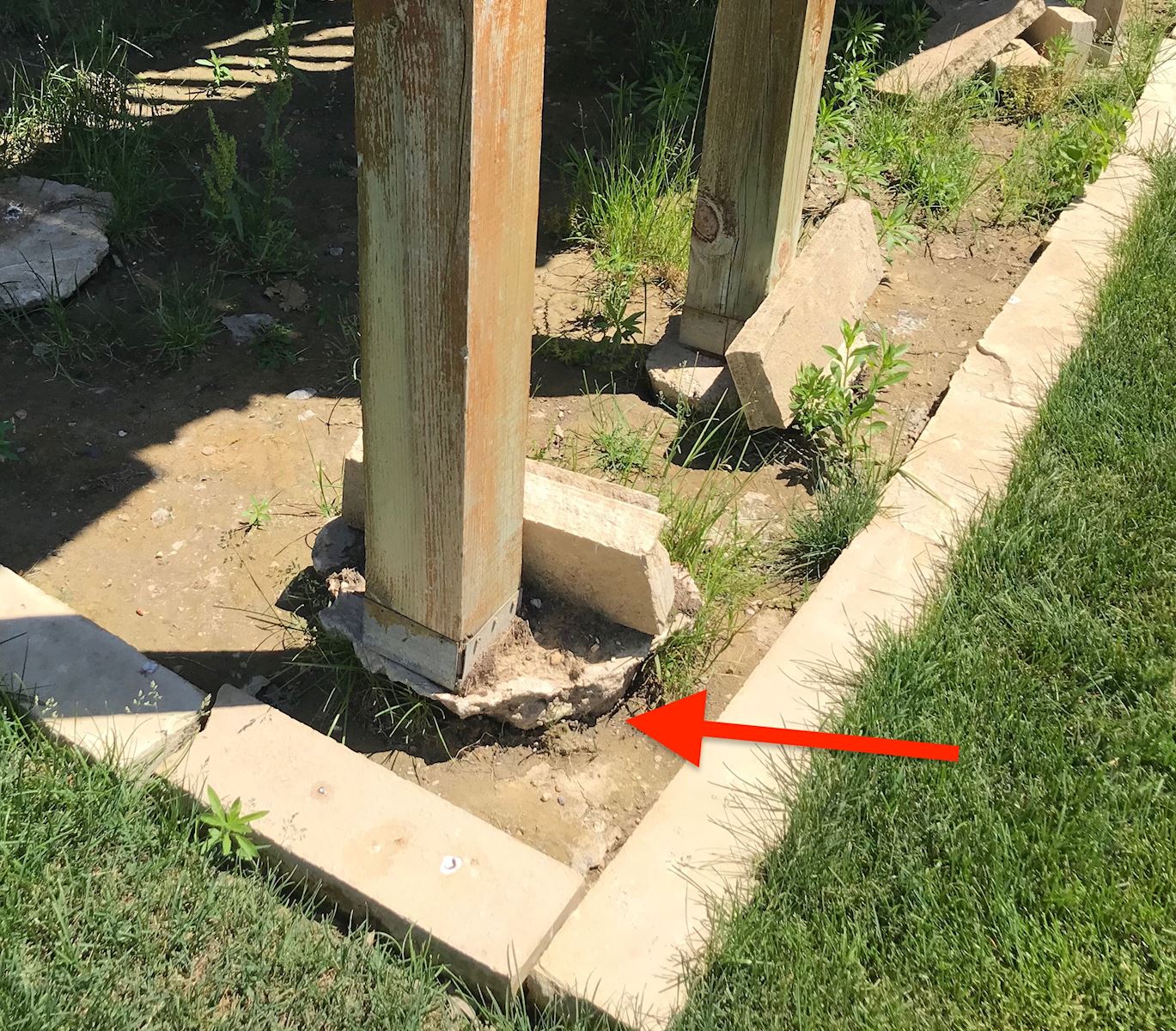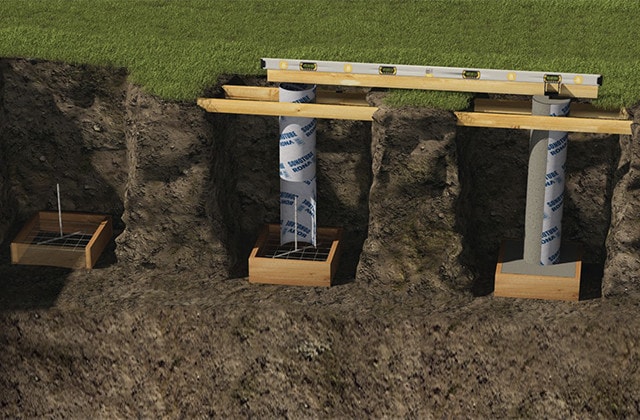Selecting the Right Deck Footings for Security and Resilience
When it comes to developing a deck, among one of the most essential choices you will make is choosing the best grounds for security and longevity. The longevity and safety and security of your deck depend greatly on the sort of footings you choose, as they supply the essential support and stability to withstand the examination of time. With a myriad of alternatives readily available, it can be overwhelming to identify which grounds are best fit for your details demands. In this conversation, we will check out the numerous kinds of deck grounds, consider the important factors to evaluate when making a decision, and explore the advantages and disadvantages of different choices. By the end, you will have a clearer understanding of the options handy and be better equipped to make a notified decision for your deck job.
Sorts Of Deck Footings
There are numerous types of deck footings that can be made use of, each offering unique advantages and considerations. One usual type of footing is the concrete pier footing. These footings are composed of a round hole loaded with concrete, which provides a strong structure for the deck articles. Concrete pier grounds are reasonably very easy to install and offer exceptional security, making them a prominent choice for many deck projects.
These grounds are mounted by screwing them right into the ground, which produces a safe structure for the deck. They additionally permit for easy change and progressing of the deck if needed.
Alternatively, some building contractors choose precast concrete grounds. These grounds are constructed from durable concrete and come in numerous shapes and sizes to accommodate various deck styles. Precast concrete footings are practical to install and offer a stable base for the deck structure.
Lastly, an additional choice is the post-in-anchor footing system. This kind of footing includes driving a steel support into the ground and affixing it to the deck blog post. It supplies versatility in regards to placing the deck articles and appropriates for decks with lightweight structures.
When choosing the best sort of deck footing, it is necessary to take into consideration variables such as soil conditions, deck tons, and regional building codes (Deck Footings). Consulting with a professional contractor or architectural designer can assist make certain the ideal footing is picked for a secure and safe deck
Elements to Consider When Picking Footings
When picking the suitable grounds for a deck, it is vital to very carefully think about numerous aspects such as dirt problems, deck load, and adherence to regional building codes. These aspects play a considerable duty in making sure the security and sturdiness of the deck structure.
Among the main variables to consider is the soil conditions. The sort of dirt on which the deck will certainly be developed establishes the type of footings needed. As an example, decks improved sandy or loosened dirts might require much deeper grounds to provide appropriate support and avoid settling. On the other hand, decks improved clay or expansive soils might need footings that can accommodate the soil's tendency to increase and contract.
One more essential aspect is the deck tons. The weight of the deck, consisting of the products used and any kind of possible real-time loads such as furnishings or celebrations, have to be thought about when selecting grounds. The footings should be made to birth the weight of the deck and disperse it equally to stop any type of structural problems or failures.
Finally, adherence to neighborhood building ordinance is paramount. Building ordinance differ from region to region, and it is necessary to adhere to the certain demands set by the neighborhood authorities. Deck Footings. These codes guarantee that the deck is built safely and satisfies the needed criteria for structural stability and load-bearing capability
Concrete Grounds: Advantages And Disadvantages

When utilized as the structure for a deck,Concrete footings supply numerous benefits and downsides. On the positive side, concrete footings give superb stability and toughness. Concrete is a solid and rigid material that can support hefty tons and stand up to Website various climate condition. It also has a lengthy life-span, making it a trusted selection for long-term usage.
One more advantage of concrete grounds is their versatility. They can be put right into various sizes and shapes to suit numerous deck layouts and arrangements. Concrete grounds can be personalized to fit the particular demands and needs of the deck framework.
Nonetheless, there are also some downsides to using concrete footings. This can boost the overall cost of the deck project and might require professional aid.

Helical Piers Vs. Sonotubes: Which Is Much better?
In thinking about the structure choices for a deck, the contrast between helical piers and sonotubes is crucial in establishing the remarkable option. They are turned into the ground making use of hydraulic machinery, giving a resilient and stable foundation for the deck.
When it comes to stability and resilience, helical piers have the upper hand. The helical plates on the piers produce a strong hold with the dirt, changing or protecting against any type of visit homepage activity of the deck. This is particularly helpful in areas with unsteady or changing dirt conditions. Sonotubes, on the other hand, rely exclusively on the concrete filling up for security, which may not use the same degree of toughness and resistance.
In terms of installment, helical piers are fairly much easier and faster to mount compared to sonotubes. The hydraulic equipment utilized to turn the piers right into the ground ensures a quick and effective process. Sonotubes, on the various other hand, call for digging holes and pouring concrete, which can be time-consuming and labor-intensive.
Furthermore, helical piers are an even more versatile option. They can be utilized in different dirt problems and can be changed or enhanced if needed. Sonotubes, on the various other hand, might require additional support, such as rebar, in certain dirt conditions or areas with high lots requirements.
Selecting the Right Footings for Your Deck's Measurements
For ideal structural honesty, it is important to very carefully pick the proper grounds that align with the dimensions of your deck. The measurements of your deck, including its size, height, and width, play a considerable duty in identifying the kind and size of footings called for.
When picking footings for your deck, it is essential to take into consideration the load-bearing capacity of the dirt. The weight of the deck, combined with the weight of any type of furnishings or individuals on it, exerts a considerable force on the footings (Deck Footings). It is essential to choose grounds that can properly support this weight without shifting or sinking over time.
Larger decks with higher dimensions need larger footings to supply enough security and assistance. The shape of the grounds, whether they are square or round, depends on the layout and layout of the deck.
Final Thought
To conclude, selecting the appropriate deck grounds is vital for making sure security and toughness. Factors such as the kind of grounds, the deck's dimensions, and the benefits and drawbacks of various options need to be thought about. Concrete grounds use toughness and durability, however may be extra pricey and taxing to install. Helical piers and sonotubes have their own advantages and negative aspects. Inevitably, picking the ideal grounds for your deck's details demands is crucial for a durable and successful structure. Learn More
These footings consist of a round opening filled with concrete, which gives a strong structure for the deck blog posts. Concrete pier footings are fairly very easy to set up and offer superb stability, making them a popular selection for many deck projects.
Precast concrete grounds are hassle-free to install and supply a stable base for the deck framework.
It provides flexibility in terms of placing the deck blog posts and is appropriate for decks with light-weight frameworks.
Concrete grounds supply numerous benefits and disadvantages when used as the foundation for a deck.